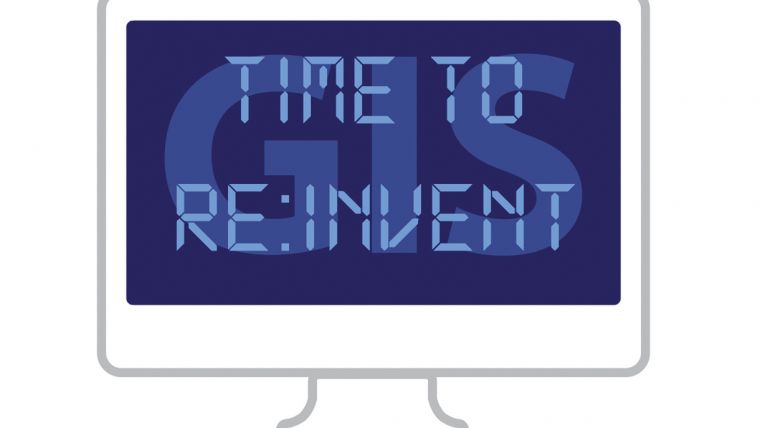GIS - Is it Time for a Change?
In the following republished piece, Linda (Hecht) Stevens of global marketing and technology firm 51by1, shares her insights from the tech-capital of the world, San Francisco. In particular, she explains how disruptive start-ups and larger tech companies are changing what it means to be a geospatialist. Regardless of whether or not you agree with Linda’s strong views and predictions, they are nevertheless important ones to consider.
I am extremely excited about the growth of geospatial in the non-GIS world. In some cases, technologists are reinventing geospatial analysis with a fresh perspective and better algorithms. In other cases, open source is allowing technologists to build geospatial capabilities into solutions without the overhead burden of a back-office GIS.
With all the exciting innovations in geospatial and location intelligence, what will happen to GIS? Touted by large vendors as a platform, GIS has become an expensive, bloated and complex set of tools bundled in an even more complex business model. But, there are some bright spots. New, forward-thinking companies are building geospatial capabilities into their products, not building applications on top of a big backend system. These solutions are designed for a particular market or problem and are faster, less expensive and reliable.
Signs of GIS Decline
Many GIS projects were implemented to build and maintain geographic data. These datasets are becoming readily available for analysis, mapping, etc. For example, Koordinates focuses on publishing geospatial data. These datasets will fuel the growth of new/modern geospatial tools. Maintaining these datasets will be integrated into workflows that take advantage of new architectures and devices. As an example, Microsoft and Mapbox are working on HD maps that will be updated in real-time using machine learning technology. Meanwhile, other organisations such as MapD include geospatial analytics as part of the analysis engine for big data.
With satellite, drone, LiDAR and imagery data now readily available to the world, companies are starting to build applications to utilise this vast amount of data that is not just plentiful, but current.
Geospatial Analysis is not just for Specialists
Large and well-known companies are also integrating geospatial analysis and mapping right into their own products. Consider the following examples:
- Tableau - Adding spatial joins in the next version release, which also includes a focus on geospatial analysis.
- Amazon - Hiring a Geospatial Intelligence Engineer for their logistics team, which, I predict, will make their inhouse systems available for others once they perfect it for their own use.
- Uber - Recently released open source geospatial visualisation and analysis tools, kepler.gl, deck.gl, as well as a geospatial indexing system called H3.
- Foam - Building geospatial right into new technology frontiers of Blockchain (in particular something called 'crypto-coordinates').
- Carto - Building geospatial solutions with ease-of-use in mind to leverage all the geospatial data available.
- Microsoft is making a big push with Azure Maps. Keep an eye on their efforts including partnerships (like Mapbox) and hires.
Open Source Continues to Evolve
In addition to the above companies, I must mention open source as a continuing trend. Bodies such as the Open Source Geospatial (OSGeo) community continues to grow and get more energy from both government organisations like NGA and technology companies like Uber. Similarly, GIS organisations like Boundlessgeo continue to support and expand on this dynamic market. Perhaps worth a mention, I highly recommend FOSS4G events - they are consistently interesting and you get to meet the folks pushing the geospatial technology boundaries!
Looking Forward
In my view, it just makes sense that traditional GIS back office tools will be replaced in modern solutions and architectures. With the wealth of data and applications growing in the location/geospatial space, it is just a matter of time until the traditional GIS platform model becomes a chapter in the history of geography textbooks. Fear not, I say. This is a good thing! Geospatial technology should, after all, be part of any modern analytics solution, not just an add on.
To conclude, I’d like to share with you just one takeaway from a recent podcast discussion on this same topic which I had with Chris and Mark from Geoadorable. I hope my answer sums this up...
Chris and Mark: With the mainstream emergence of business intelligence/data science, as well as commoditised digital mapping, are location specialists being marginalised?
Linda: Not at all. Individual GIS specialists will be if they keep looking back. The spatial skills that they master are not being marginalised. The particular GIS technology they use at their job will be commoditised, but how they think about solving problems will be in even more demand. Technology comes and goes, but spatial problem-solving skills don’t. I've talked to a number of Data Scientists in Silicon Valley who are just now understanding the complexities of a spatial analysis. BUT once they get it, they solve it in ways never thought of before! That is exciting. Teaming geospatial experts with AI/IoT/Machine learners, etc. will change how we approach many of our most pressing problems.
This article was published in GIS Professional August 2018

Value staying current with geomatics?
Stay on the map with our expertly curated newsletters.
We provide educational insights, industry updates, and inspiring stories to help you learn, grow, and reach your full potential in your field. Don't miss out - subscribe today and ensure you're always informed, educated, and inspired.
Choose your newsletter(s)
























